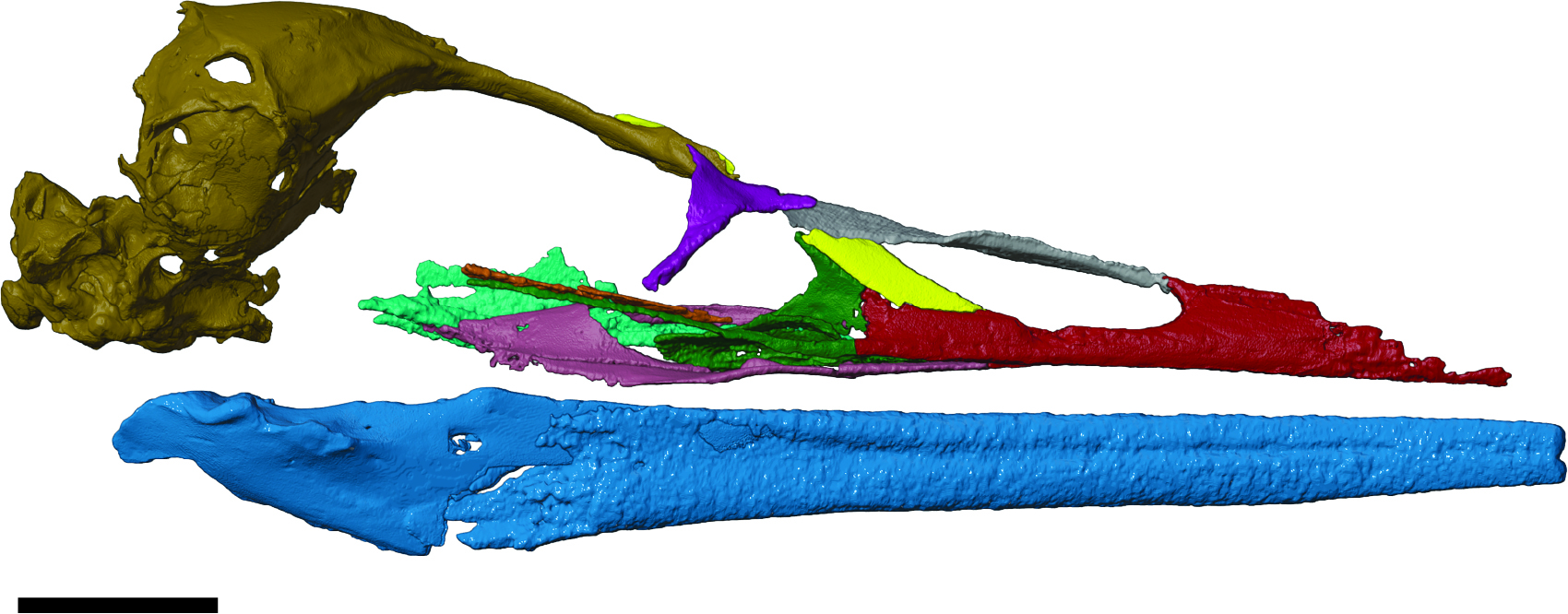A Cretaceous-era skull found on Vega Island, Antarctica, has been confirmed as a member of the same order as ducks and geese, making it one of the oldest known examples of a modern bird. Dating from not very long before the asteroid hit, the species Vegavis iaai, or a near relative, is a strong candidate for one of the few survivors of the last mass extinction.
ADVERTISEMENT GO AD FREE
The branch of dinosaurs that became birds broke away from other dinosaurs in the Jurassic – but unsurprisingly, birds today are very different from those pioneers. Certainly, they cannot be placed into existing bird families, most of which only evolved after the extinction of the other dinosaurs opened a world of new possibilities.
Anseriformes (aka waterfowl) have now been established as an exception, thanks to a scientific description of a fossil found during a 2011 expedition to the Antarctic Peninsula and its nearby islands. The fossil’s long, pointed beak looks duck-like to even the most casual observer, but new research has shown the resemblance is more than bill-deep. The team of researchers was able to reconstruct the shape of the bird’s brain to confirm it was nothing like any other known pre-impact species, but reminiscent of modern ducks and geese.
Digital reconstruction of the fossil skull and beak of the late Cretaceous bird Vegavis Iaai
Image Credit: C. Torres and J. Gronke
The first Vegavis fossil was found in 1993 and named 12 years later. However, the first examples were partial specimens lacking the sections that would allow paleontologists to place them with certainty.
“Few birds are as likely to start as many arguments among paleontologists as Vegavis,” the study’s lead author Dr Christopher Torres said in a statement. “This new fossil is going to help resolve a lot of those arguments. Chief among them: where is Vegavis perched in the bird tree of life?”
Co-author Dr Julia Clarke of The University of Texas at Austin, who first reported Vegavis, placed it among the waterfowl, but others presented alternative relationships.
The researchers claim the features they have now identified in Vegavis are too waterfowl-like to leave any doubt. Specifically, they note the “hyperinflated” cerebrum and the optical processing areas being shifted to the front.
ADVERTISEMENT GO AD FREE
They do, however, note one feature not seen among its modern descendants; powerful jaw muscles allowed Vegavis to snap its beak closed when underwater catching fish. Presumably no giant theropods were tossing birdseed to their resident fowl, so fish had to take its place on the menu, creating a lifestyle closer to a modern grebe or loon than any of the modern waterfowl.
All the known Vegavis fossils date from 69.2-68.4 million years ago, just three million years before the world changed. Whether it was Vegavis itself, a direct descendent or a sibling species that survived the impact, will require finding fossil sites dating from closer to the crucial date.
Nevertheless, another waterfowl from the same Antarctic rock formation, Conflicto antarcticus, represents one of the first surviving species we know from after the disaster.
ADVERTISEMENT GO AD FREE
Several other Cretaceous birds – including the fellow Antarctic-dwellers Polarornis gregorii – have been proposed as close relatives of Vegavis, but the authors argue the fossils we have of these are too partial to say this with confidence.
The light bones that allow most birds to fly don’t fossilize well, so the record of bird evolution is sparse, even more so when they were making their way among the other dinosaurs.
“Those few places with any substantial fossil record of Late Cretaceous birds, like Madagascar and Argentina, reveal an aviary of bizarre, now-extinct species with teeth and long bony tails, only distantly related to modern birds,” said co-author Dr Patrick O’Connor.
Vega Island is currently the exception – partially as a consequence of fortunate geology, but it may also be that Antarctica was a stronghold for birds. They may have been better adapted to its polar conditions than most other dinosaurs, being both warm-blooded and capable of seasonal migration.
ADVERTISEMENT GO AD FREE
“Antarctica is in many ways the final frontier for humanity’s understanding of life during the Age of Dinosaurs,” co-author Dr Matthew Lamanna said.
Moreover, Vegavis’ location lends support to the suspicion that birds in particular, and many other Cretaceous survivors, made it through the apocalypse south of the equator. Recolonizing the north would have been a quick process for such mobile creatures.
In the brave new Paleogene world, waterfowl flourished, taking a leaf out of the missing dinosaurs’ book in the form of Dromornis – Australia’s “Demon Ducks of Doom”, they reached weights of 500 kilograms (1,100 pounds). How many other families of modern birds branched off from them soon after the impact to become the success stories we know today is still unclear.
Those confident they could take a goose in a fight might want to think again. Not only are they representing a family that made a place among the mightiest predators of all time, but if it were not for their tenacity, today’s world might not have birds at all.
ADVERTISEMENT GO AD FREE
The study is published in the journal Nature.
Source Link: 68 Million-Year-Old Antarctic Fossil Proves Existence Of Dinosaur-Era Ducks
